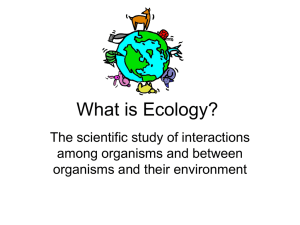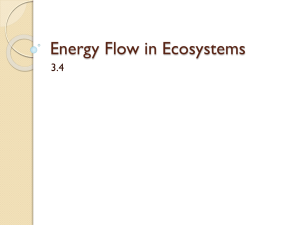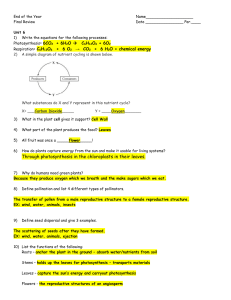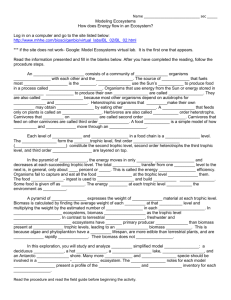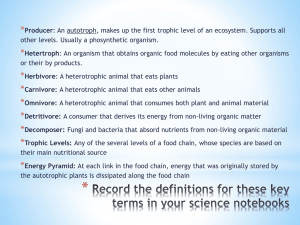Notes on how energy moves through living systems
advertisement
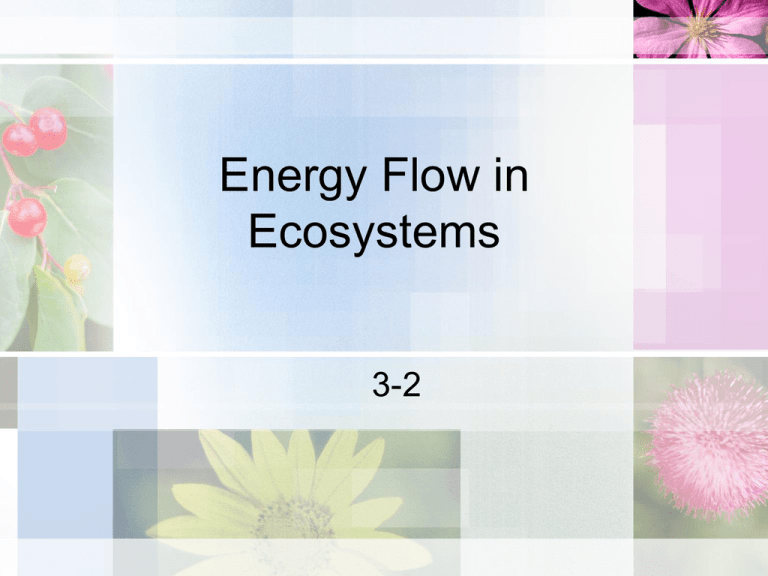
Energy Flow in Ecosystems 3-2 Why Energy? Powers life’s processes Flow of energy through ecosystem sustains life Analogous to money in an economy Where does the energy come from? Sunlight is the main energy force for life on Earth Only a small amount (~1%) is used by living things Why? Autotrophs Definition: Organisms that capture energy from sunlight or chemicals and use that energy to produce food. Also called Producers Photosythesis Photoautotrophs Convert light energy into chemical energy contained in carbohydrates (Sugars) Fixes carbon dioxide from atmosphere into carbohydrates Chemosynthesis Chemoautotrophs Use energy in inorganic chemicals to build energy storing carbohydrates as food (Sugars) Fixes carbon dioxide dissolved in seawater into carbohydrates (Sugars) Where does the energy go next? Heterotrophs Definition: Organisms that rely on other organisms for their energy and food supply Also called consumers Types of Heterotrophs Herbivores Carnivores Omnivores Detritivores Decomposers Feeding Relationships Energy flows through an ecosystem in one direction, from the sun or inorganic compounds to autotrophs (producers) and then to various heterotrophs (consumers) The relationships between producers and consumers connect organisms into feeding networks based on who eats whom Food Chain a series of steps in which organisms transfer energy by eating and being eaten Food Web Feeding relationships among the various organisms in an ecosystem forming a network of complex interactions Food webs link all the food chains in an ecosystem together Trophic Levels Each step in a food chain or food web is called a trophic level Producers make up the first trophic level Consumers make up the second, third, or higher trophic levels Each consumer depends on the trophic level below it for energy Energy Transferred Only about 10 percent of the energy available within one trophic level is transferred to organisms at the next trophic level Biomass Pyramid Biomass is the total amount of living tissue within a given trophic level A biomass pyramid represents the amount of potential food available for each trophic level in an ecosystem Answer the following questions: 1. What are the two main forms of energy that power living systems? 2. Briefly describe the flow of energy among organisms in an ecosystem. 3. What proportion of energy is transferred from one trophic level to the next in an ecosystem? 4. Show the following as a food chain: omnivore, autotroph, herbivore. 5. Draw an energy pyramid for a five-step food chain. If 100 percent of the energy is available at the first trophic level, what percentage of the total energy is available at the highest trophic level?



